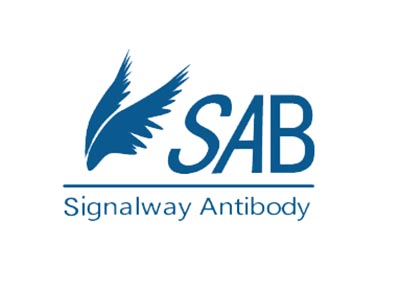Product Detail
Product NameInsulin Receptor alpha Antibody FITC Conjugated
Host SpeciesRabbit
ClonalityPolyclonal
IsotypeIgG
PurificationPurified by Protein A.
Applications IF
Species ReactivityHu Ms Rt
Immunogen DescKLH conjugated synthetic peptide aa 700-750 1382 derived from human Insulin Receptor alpha
Target NameInsulin Receptor alpha
ConjugateFITC
Excitation Emission494nm 518nm
Other NamesHHF5; CD220; Insulin receptor; IR; INSR
Concentration1mg ml
Formulation0.01M TBS(pH7.4) with 1% BSA, 0.03% Proclin300 and 50% Glycerol.
StorageShipped at 4˚C. Store at -20˚C for one year. Avoid repeated freeze/thaw cycles.
Application Details
IF=1:50-200
Receptor tyrosine kinase which mediates the pleiotropic actions of insulin. Binding of insulin leads to phosphorylation of several intracellular substrates, including, insulin receptor substrates (IRS1, 2, 3, 4), SHC, GAB1, CBL and other signaling intermediates. Each of these phosphorylated proteins serve as docking proteins for other signaling proteins that contain Src-homology-2 domains (SH2 domain) that specifically recognize different phosphotyrosines residues, including the p85 regulatory subunit of PI3K and SHP2. Phosphorylation of IRSs proteins lead to the activation of two main signaling pathways: the PI3K-AKT PKB pathway, which is responsible for most of the metabolic actions of insulin, and the Ras-MAPK pathway, which regulates expression of some genes and cooperates with the PI3K pathway to control cell growth and differentiation. Binding of the SH2 domains of PI3K to phosphotyrosines on IRS1 leads to the activation of PI3K and the generation of phosphatidylinositol-(3, 4, 5)-triphosphate (PIP3), a lipid second messenger, which activates several PIP3-dependent serine threonine kinases, such as PDPK1 and subsequently AKT PKB. The net effect of this pathway is to produce a translocation of the glucose transporter SLC2A4 GLUT4 from cytoplasmic vesicles to the cell membrane to facilitate glucose transport. Moreover, upon insulin stimulation, activated AKT PKB is responsible for: anti-apoptotic effect of insulin by inducing phosphorylation of BAD; regulates the expression of gluconeogenic and lipogenic enzymes by controlling the activity of the winged helix or forkhead (FOX) class of transcription factors. Another pathway regulated by PI3K-AKT PKB activation is mTORC1 signaling pathway which regulates cell growth and metabolism and integrates signals from insulin. AKT mediates insulin-stimulated protein synthesis by phosphorylating TSC2 thereby activating mTORC1 pathway.
If you have published an article using product C00033F, please notify us so that we can cite your literature.



 15 business days.
15 business days.



